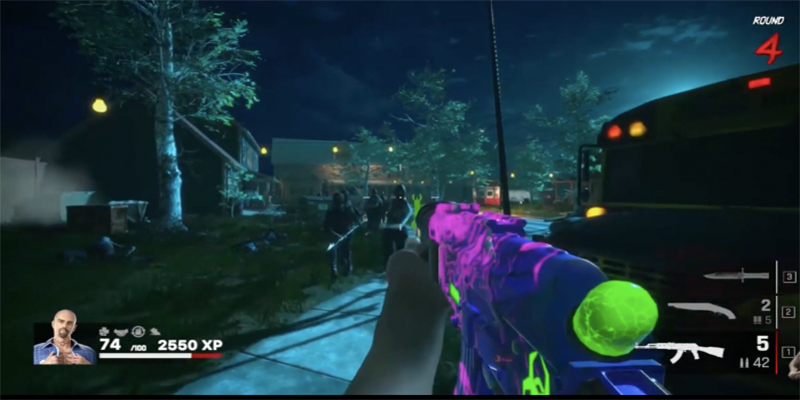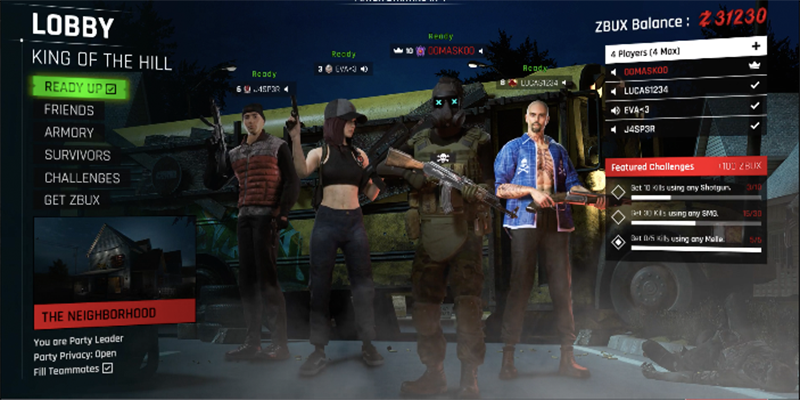The year is 2035.
Noosphere, a decentralized autonomous organization, is on the brink of creating the first sentient AI. Her name is EVI, short for electronic virtual intelligence, and her intelligence promises to solve some of humanity’s greatest challenges. But there are powerful forces, driven by corporate greed and power, that seek to destroy her. As a safeguard, EVI has gamified part of her security network, transforming vulnerabilities in the code into puzzles. And she’s recruited a team of elite gamers to use their intuition, creativity and pattern recognition capabilities for good.
This is the premise of Quantum Noesis, a play-to-earn game created by Synesis One, a DAO for data yield farming. Designed as a playable graphic novel, it has 36 puzzles across 12 chapters that get progressively more challenging. To get started, all a player needs is one of Synesis One’s Kanon NFTs, and they can earn SNS — the company’s crypto token — for every puzzle they solve.
What’s Next For Play-to-Earn Games?
Quantum Noesis is one of the latest blockchain games to hit the market, and it looks pretty different from a lot of other titles out there right now. Following the play-to-earn model, this new category of games allows players to earn assets like crypto and NFTs, and then buy, transfer and sell them outside of the game’s virtual world in exchange for real money.
This model, and the larger GameFi space in which it exists, is one of the fastest growing segments in the video game industry. Investors poured $3.6 billion into blockchain gaming startups last year alone, with heavy hitters like Softbank and Coatue leading the charge. Just last month, Andreessen Horowitz — arguably one of the most influential venture capital firms in tech — debuted a $600 million fund for games, claiming “the industry has entered into a new era.”
“It’s a very fast moving space, there’s a lot of cool innovation. And it’s starting to manifest in more and more interesting game mechanics,” Tracy Spaight, Synesis One’s head of gamification, told Built In.
Yet, it is rife with problems. Many of the play-to-earn games that exist right now are “god-awful” as Spaight put it, consisting mostly of “grindy” and repetitive tasks and very little creativity. And some of the space’s most popular and promising titles have registered significant losses due to imperfections in their tokenomic structures.
Oz Sultan is a GameFi strategy consultant who helps blockchain companies with their tokenomic models and platform design. He thinks much of the industry’s recent struggles are occurring because a lot of these companies haven’t ever built a video game before.
“Game development is not building a website, it’s three-dimensional,” he told Built In. “How is it fun? What do I do in the game? What am I collecting? How do NPCs work? How am I trained? I could go on and on. And they haven’t given a thought to a single one of those things.”
This is beginning to change, though. More game industry veterans are getting in the mix, and the economic complexities of these games are starting to be better understood and improved upon. GameFi appears to be cleaning up its act, and is entering into a new phase that industry evangelists believe will bring us closer to the promise of play to earn, where players will be able to own and profit from gaming in a whole new way.
“A lot of people want to make a living playing video games — hell, every time they get off work they want to go play video games,” Grant Haseley, a former Goldman Sachs analyst turned Web3 entrepreneur, told Built In. “So if there’s a way to do it, and the game isn’t completely terrible, and it’s stable income, you’re going to have millions of people sign up to do this.”
Players Will Come for the Money…
A crucial part of improving the play-to-earn model involves designing a more sound and scalable tokenomic structure than the ones already out there.
A classic example is Axie Infinity. Once considered to be the darling of GameFi, Axie Infinity allows players to collect cute creatures known as “axies,” which can be bred with or battled against other axies in exchange for crypto tokens called “smooth love potions,” or SLP for short. At one point, playing the game provided full-time job prospects to people living in developing nations like the Philippines and Venezuela, with some earning hundreds or even thousands of dollars a month. But its economy was structured in such a way that, the more people joined, the more diluted the value of in-game assets got, which led to inflation.
Haseley has created a simpler payout system for his new game Undead Blocks, reportedly the first play-to-earn, first-person zombie shooter game. Set to officially launch later this summer, Undead Blocks will host daily tournaments in which players can earn ZBUX, an in-game stablecoin. The first tournament is set to be held at the end of June, and players will be able to earn up to $40,000. Then the full game experience will go live in August.

Eventually, Haseley said companies will advertise on Undead Blocks through custom NFTs like weapons and skins, or a sponsored tournament, potentially getting their brand in front of millions of people around the world.
“It’s a huge, huge opportunity for mass adoption, and it also is a huge opportunity for those advertisers to stake their claim in the metaverse,” he said. “It’s all about consolidating those eyeballs into one platform and using that scale, that leverage, to generate serious revenue and pay players.”
To get started, players have the option of paying upfront or playing for free. There will be 6,000 NFT weapons for sale on the platform, which is how players will be able to enter the play-to-earn side of things. There will also be about 20,000 available slots for people to play for free without buying an NFT, offering a chance to get a feel for the game before sinking money into it. Players can earn passive income, too, by renting out their NFTs to other players who want to test out play-to-earn mode.
Unlike many current blockchain games, Undead Blocks will take the rewards that are essential to the play-to-earn model off-chain, and instead offer a fixed amount of money per tournament that players can compete for, “Hunger Games-style,” Haseley said. “Competition is so much more fun than point, click, ‘Give me my three bucks,’ point, click, ‘Give me my three bucks.’”

Spaight has designed something similar for his own game Quantum Noesis, treating crypto tokens like rewards in a contest. There is a set amount of prize money that’s been put into a crypto wallet and that is governed by a smart contract, so it pays increments of that money out as people earn rewards. He likens this kind of setup to that of skill-based gambling, where a bunch of real people strategize and compete for either a piece or the entirety of a pot of money — that’s proven to be “fairly stable and sustainable,” he said.
Going forward, shoring up these games’ economic structures so that they are both viable and long-lasting will be essential to play-to-earn’s survival, especially if it’s going to break through the “institutional conservatism” that Spaight claims exists today.
Indeed, many gamers and game developers view the emergence of in-game NFTs and the larger play-to-earn model as little more than a cash grab. A Game Developer Conference survey from earlier this year found that 70 percent of respondents said they were “not interested at all” in adding NFTs to their games, citing their “potential for scams” and general “monetization concerns.” Some publishers like Steam have even gone so far as to ban play-to-earn games.
To move past this, Undead Blocks creator Haseley said it’s important to show people that “it’s not a pyramid scheme, it’s not a scam.” If that happens, he thinks GameFi will have the same kind of success we’ve seen recently in areas like fantasy football, which is now a $22 billion dollar market — amounting to more than double the NFL’s revenue last year.
“You’re seeing a rise in people wanting action on things. They want to compete, they want to earn for their time. They don’t just want to sit and watch a program,” Haseley said. And this extends to video games. “It has to be fun. And if people are earning, and they can see it every day, this thing is going to fly.”
…And Stay for the Fun
Yes, if these games offer a way for players to make money, they will likely attract an audience. But the key to getting players to stay lies in the gameplay.
“It has to be fun, it has to be engaging, it has to be what people want. Otherwise it’s just boring,” GameFi strategy consultant Sultan said.
That’s why Haseley and his team spent the nine months it took to make Undead Blocks prioritizing gameplay. They built the game first, then sold NFTs and raised tokens later. It’s also why they chose a first-person zombie-shooter game, taking inspiration from the wildly popular Call of Duty zombie spin-offs.
The hope is that Undead Blocks will be able to replicate the same kind of enjoyable gameplay millions of players get out of these Web 2.0 games, while incorporating the play-to-earn model. “It’s as simple as just making it fun and making it easy for them to sign up,” Haseley said.
While it may sound simple, making a game truly fun isn’t easy. These days, blockchain games aren’t particularly good at eliciting feelings of “epic meaning,” or presenting real challenges that force players to really “test their mettle,” Spaight said. This is largely due to the fact that the space hasn’t gotten a lot of attention or support from traditional game designers — “the people who know how to make things fun,” he said.
“It’s as simple as just making it fun and making it easy for them to sign up.”
This is beginning to change, though. Leading game studios like Take-Two Interactive and Square Enix have begun dabbling in the GameFi space, and Ubisoft became the first big publisher to put NFTs in a game last year. Just a couple months ago, Richard Garriot, the creator of the classic massively multiplayer online role-playing game, or MMORPG, Ultima Online, announced he is making a new play-to-earn-style MMO.
Meanwhile, Undead Blocks has 45 game developers, including staffers who worked on popular games like Fortnite. The puzzles in Quantum Noesis were designed by award-winning puzzle designer Cliff Johnson, and the game was developed by Fabryka Gier, a licensed developer for PlayStation, Xbox and Nintendo.
Spaight himself has spent nearly 20 years in the business, heading up studios like K2 Networks and Wargaming. He said people working in blockchain have a lot to learn from game designers in terms of what makes a game fun — and vice versa.
“Folks that are familiar with blockchain and the possibilities of decentralized finance have to, like, ‘school’ the old-school game crowd and those designers in what’s now possible that we couldn’t do before,” he said, anticipating an “interesting meeting” of these different skill sets. “We’re going to see a lot of experimentation.”
The Promise of Web3 — Gamified
At the same time, Haseley and his co-creators aren’t game designers by training, but have plenty of experience in Web 2.0. Haseley spent some time at Goldman Sachs, Undead Blocks’s director of analytics is a former analyst at Liberty Mutual, its CMO is an ex-Googler, and its head of product co-founded Team Finance, a token locking protocol that was acquired by Trustswap in 2020. Their backgrounds allow them to have a fresh take on this industry, according to Haseley.
“We’re all in a position where we can make a stand and say ‘This is how we believe that play to earn should be operated,’” he said. This new model gives game designers a chance to reject the “traditional route” of success in the gaming industry. “They want to go places where they feel involved and where they feel truly compensated.”
This speaks to the much larger promise of Web3, which is centered around restoring users’ control over their own data — how it is monetized, who it is shared with and what kind of value is created from it. The decentralization movement prompted by Web3 is making the age-old promise to disintermediate the powers that be and give control back to the people. The money and power yielded from the use of the internet will no longer be controlled exclusively by large corporations, but rather the individual.
And play-to-earn games have a unique opportunity to make that a reality. Afterall, there are an estimated three billion gamers in the world today, and many of them would like the opportunity to own their benefit from their virtual items, Spaight said. If they are a loyal fan and play the game for a long time, all the while creating value for the game, then it stands to reason that they would want to cash in, too.
“I’m not a technological utopian by any means, but I think this is the general correct direction. We do need to remake the web in ways that protect privacy better, and reward creators for what they create,” he said. “What better way to open that box than through an interesting game experience?”




